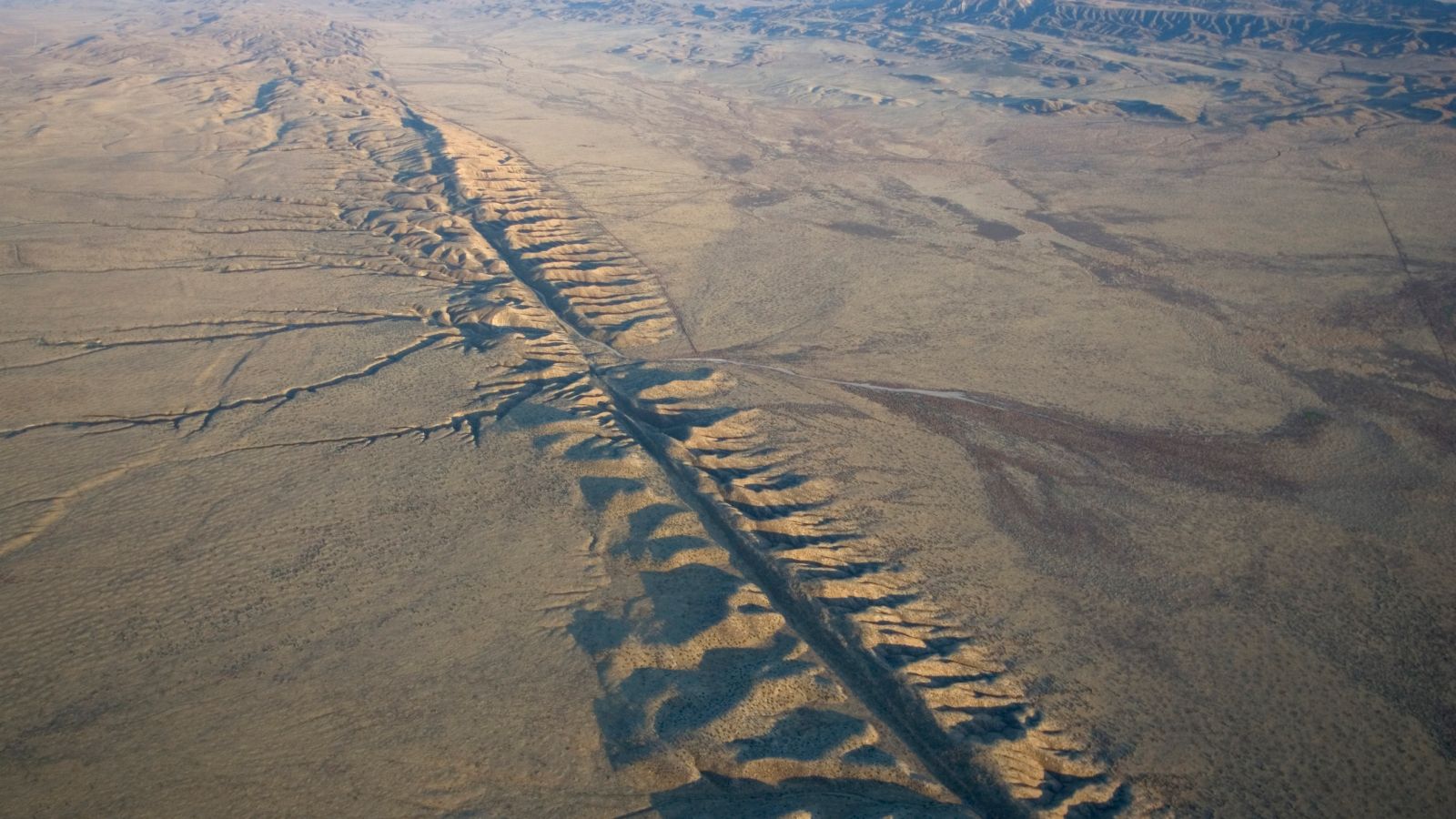A “Big One” on the Cascadia subduction zone in the Pacific Northwest might trigger a similarly serious earthquake on California’s San Andreas Fault, new research suggests.
The findings are based on sediments taken from the seabed off the coast of Cape Mendocino, California and offshore Oregon. It’s at Cape Mendocino that California’s famous San Andreas fault ends and the Cascadia subduction zone begins.
But if the two fault systems are, in fact, synchronized, it could be a real problem for disaster relief, said study first author Chris Goldfinger, a paleoseismologist and professor emeritus at Oregon State University.
“Having these things side by side would really be a tough one,” Goldfinger told Live Science. “There’d be not enough resources to respond to even one of these very well, and two of them would be really difficult.”
Earthquake potential
Cascadia can create extremely powerful earthquakes. Famously, in 1700, the region experienced a quake thought to be between magnitude 8.7 and 9.2 that sent destructive tsunami waves all the way to Japan. These quakes are caused by movement of three oceanic plates (the Explorer, the Juan de Fuca, and the Gorda) slipping beneath the North American continent.
The San Andreas Fault, on the other hand, is a strike-slip fault where rock masses on either side of the fault move past each other horizontally.. The largest known quake on the northern San Andreas was the 1906 San Francisco earthquake of approximately magnitude 7.9. Because the fault runs through densely populated areas, it could do a great deal of damage, as in the 1989 Loma Prieta earthquake that killed 63 people.
The two fault systems meet off the coast of Mendocino in an area known as the “triple junction.” Goldfinger and his colleagues were on a research cruise in 1999 drilling core samples from the ocean floor in Cascadia, looking for signs of ancient earthquakes. When large earthquakes happen on land, they can trigger underwater flows of sand and sediment known as turbidites. Turbidites follow a pattern where coarse sediment settles out of the water first, creating a layer. Finer sands and silt follow, forming another layer.
On that cruise, however, a mix-up led to the ship traveling 60 miles from where they’d meant to be. The scientists, who were trying to nap between working, didn’t realize the error until the ship arrived.
“I was just like, ‘Oh no, we’re like halfway to San Francisco,'” Goldfinger remembers.
He decided to take a core sample in that spot anyway. When the team later analyzed the sample, they realized it contained a mystery. The turbidites in the sample didn’t have the coarse layer on the bottom and the finer layer on top, as was typical.
“This original core of the San Andreas had deposits that looked like they were upside-down,” Goldfinger said. “The sand was at the top.”
Upside-down evidence
The researchers had no explanation for this flip-flopped pattern. Nor, at first, did they have an explanation for another strange mystery of these offshore samples: Cores taken south of the triple junction, in the realm of the northern San Andreas, seemed to show earthquakes that matched eerily well to the timing of earthquakes taken north of the triple junction in Cascadia. In the last 1,300 years, they found, there were 18 likely earthquake-generated turbidites in Cascadia and 19 offshore from the northern San Andreas. Ten of those appeared to be deposited within 50 to 100 years of each other.
Even weirder, in three cases, the coarse sand of the upper layer of these flip-flopped turbidites was mixed into the finer sand of the lower layer, suggesting the upper layer had settled while the bottom layer was still in motion. That would mean that the two layers were deposited within hours to days of one another. These three events included the 1700 Cascadia quake, as well as quakes 1,200 years ago and 1,500 years ago.
It took many years to conduct additional radiocarbon dating, gather corresponding earthquake records from other sources like lakebeds in California and ponder the meaning of these bizarre “doublet” turbidites. But ultimately, Goldfiner said, he came to realize that these San Andreas turbidites might represent two different quakes: One, from the far-off Cascadia region, which shook off only lighter silt and sand, and the second, from a soon-after San Andreas quake that was locally stronger and could move coarser material.
“That would explain it,” Goldfinger said. “It would explain the match-up of ages… that’s what broke the dam.”
The researchers argue in their new paper, published Sept. 29 in the journal Geosphere, that large quakes in Cascadia can transfer stress to the neighboring San Andreas, which then leads to a San Andreas earthquake not long after.
Earthquakes triggering one another are not unheard of, said Harold Tobin, a seismologist at the University of Washington who was not involved in the research. But most of those examples occur in the same fault zone.
“There aren’t really examples that I can think of where two different types of plate boundary faults are so tightly coupled as what’s proposed in this paper,” Tobin told Live Science. The work was carefully done, he said, but “for me, the jury is still out on whether there could be other explanations for the sediment deposits or not.”
Cascadia and the northern San Andreas region are highly seismically active, and many other faults could trigger earthquakes, Tobin said. Sedimentary deposits are complicated to interpret, and there are uncertainties inherent in radiocarbon dating.
“There are an awful lot of reasons why this is a complicated system,” Tobin said. “This is an intriguing set of observations, but it’s going to take even more detailed work to corroborate.”
Goldfinger said he hoped the work would inspire Cascadia geologists and San Andreas geologists to work more closely together to do that detailed work.
“We all have a lot to learn from each other,” he said. “I’m hoping it will ratchet up the quality of science on both sides.”
